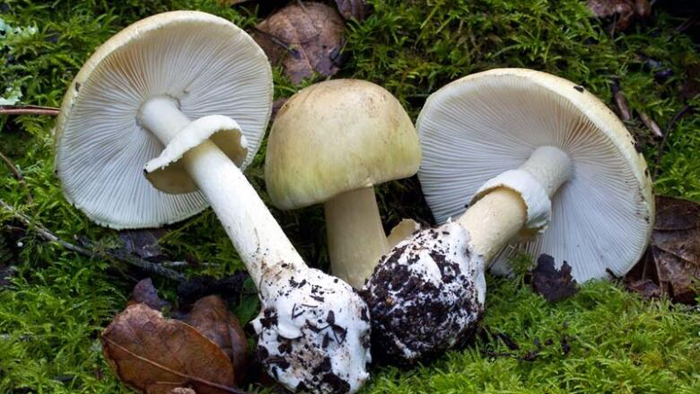Mushroom poisonings are on the rise in the province, and the BC Centre for Disease Control’s Drug and Poison Information Centre is urging people to use extreme caution when foraging for wild mushrooms.
The death cap mushroom has been seen in parts of the province, including in the Gulf Islands. It is the most deadly mushroom in the world, and is often found in urban areas rather than in natural forest. Other varieties of wild mushrooms are less toxic than death caps but can also cause severe illness.
According to an invasive species alert from the Ministry of Environmental Protection and Sustainability, death cap mushrooms have been known to grow near Garry oak trees. That report stated that it has been spotted in the past on Galiano Island near a hazelnut tree planted decades ago.
Island Health spokesperson Cheryl Bloxham said Monday that she had “received no reports about death cap mushrooms on the Gulf Islands [so far this year]. We would, however, likely only be notified if there was a human or possibly animal-related illness associated with the mushrooms.”
This year is on track to be a record year, according to the Provincial Health Services Authority and the BCCDC, which has received 201 calls as of Sept. 30. By comparison, 2018 saw 202 calls in total, and 161 calls were logged in 2017. The BCCDC correlates the increase in calls related to mushroom foraging to the amount of rainfall received in a year. The mushroom’s normal fruiting period is from late August until early November, with some cases documented in December.
Though no human deaths have been attributed to the death cap mushrooms since 2016, a release from the Provincial Health Services Authority said that two dogs have died due to possible death cap poisoning this year.
They are particularly dangerous since they closely resemble other edible varieties of mushrooms, including puffballs or Asian Straw mushrooms. Symptoms of poisoning include nausea, vomiting, watery diarrhea, low blood pressure, liver failure and kidney failure. Illness begins eight to 12 hours after ingestion with gastrointestinal issues, followed by an apparent recovery. Symptoms recur, and kidney and liver damage progresses over the next three to six days.
Mushroom hunters are urged to use caution and only eat mushrooms that are well known to be edible and are easy to distinguish from poisonous varieties. Those who suspect they’ve ingested the mushrooms are to call the Drug and Poison Information Centre’s 24-hour line at 1-800-567-8911 and seek immediate medical attention.
For more on this story, see the Oct. 30, 2019 issue of the Gulf Islands Driftwood newspaper, or subscribe online.

